The environment, an object of history
PDF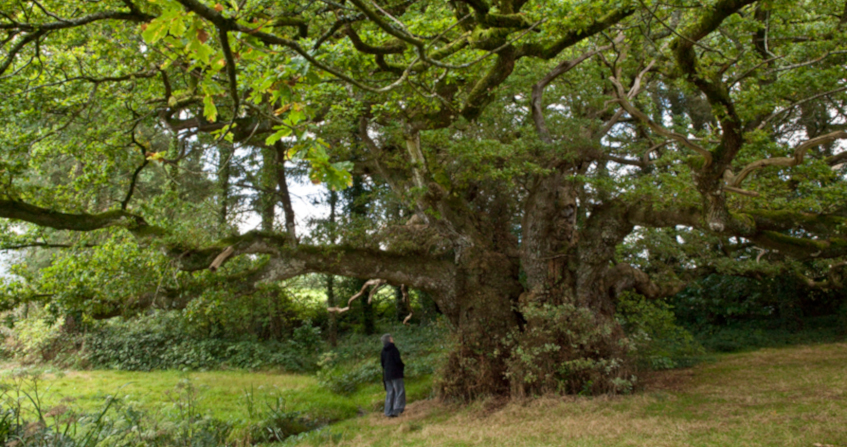
History, a science that studies above all the life and activities (economic, political, cultural, etc.) of human societies in the past, has gradually focused on the interactions they had with their environment, as a result of the rising ecological concerns of the last third of the 20th century. Ideas relating to the protection of nature, responses to disasters and pollution or preventive actions with regard to them, exploitation of resources and environmental impacts of development have been the main themes that have fuelled the development of environmental history (a more literal translation of the English environmental history). It studies past interactions between societies and their environments. In doing so, it integrates non-human elements into history and contributes to the deconstruction of a long Western tradition of separating “reason”, society and culture, on the one hand, and “nature”, on the other
1. A history of the environment integrated into the “air of the times
Environmental history does not really have a “founding father”, as can be the case for a particular discipline of human science. It is a cross-cutting approach practiced by geographers, ecologists and other researchers interested in the evolution of terrestrial environments. For their part, historians usually agree to highlight two founding fields.
First of all, after a tradition of political history more sensitive to the great battles and crowned heads, contemporary with the birth of geography, that of the Annales school, a history review founded in 1929 by Marc Bloch and Lucien Febvre. This current was embodied by Fernand Braudel who, in the middle of the 20th century, produced a major work on the Mediterranean in the 16th century. This French specificity, linked to the proximity between history and geography in academic education often disconnected from ecological concerns, the term “environment” itself not being used until the 1970s. For a long time, research, influenced by an economic and social approach, focused on the history of social groups (workers, the bourgeoisie, peasants, etc.), without really studying the environmental consequences of the evolution of productive activities, such as the industrialization of the 19th century. A few attempts to write a story “without people”, i.e. natural phenomena for themselves, such as climate change, have been talked about but have not been well received. It was to interpret price curves and conjunctural analyses that Emmanuel Le Roy Ladurie began to take an interest in weather ratings in the Languedoc countryside in the 1960s. “It is the agrarian history that has led me through an insensitive and normal transition to the history of climate,” he explains as soon as his founding work, The Birth of Climate since the year 1000, was introduced. Gradually, the use of computers to process statistical series and his collaboration with meteorologists gave his work an international reputation. More recently, people have been restored as subjects, sometimes as victims of climatic hazards, sometimes as actors of modification or thinkers of engineering to modify the climate. This recent development illustrates a phenomenon well known to those who practice it: history is the daughter of its time and asks itself the questions that society puts forward when it is practiced.
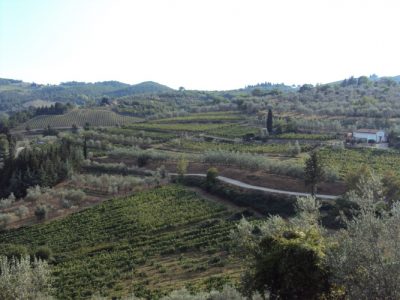
Let us add a third way, represented by the areas of collaboration needed between complementary approaches to understand the past of societies in relation to the environment. Thus, developments in archaeobotany, the study of pollens and traces of charcoal, and environmental analysis techniques in general have made it possible to fill gaps in written documentation and to constitute important milestones for the proto-historic, ancient and even medieval periods. For a more recent period, the contribution of aerial photography analyses and the use of geographical information systems is an asset for studying the environmental impacts of major developments in the second half of the 20th century.
From now on, the fields of study are very vast, and bring together researchers from different disciplinary backgrounds (historical geography, ecology, biology, etc. and not just history). Let us remember that historical approaches to the environment put societies (which act, undergo, manage, etc.) at the forefront, while for environmental sciences, societies are an explanatory factor of environmental changes in terms of plant or animal biodiversity or climate phenomena, which are the main focus of the study.
The rest of this article aims to present some of the most dynamic areas, and their most significant results.
2. People and environments
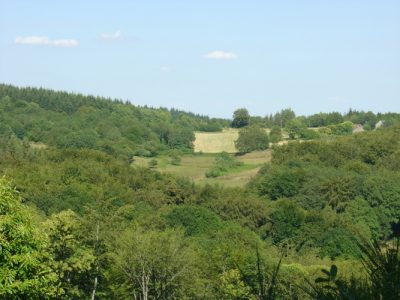
A second area that has been much worked on by the social sciences from a historical perspective is that of wetlands. The economic and political motivations for marsh dewatering have been highlighted since the beginning of the modern era [3]. These areas were the subject of numerous drainage and mosquito control operations in the context of the planning State and the major spatial changes of the 1960s and 1970s (consider Languedoc), before becoming one of the flagship sites for ecological action to protect ecosystems and biodiversity.
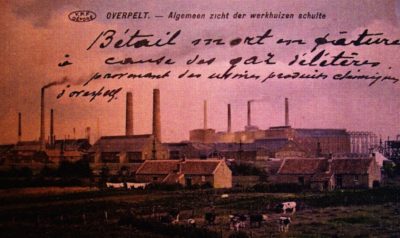
- By focusing the survey on the processes of improving the urban environment, particularly following the profound upheavals that population growth and 19th century industrialization brought about. The question of nature and green spaces, such as technical devices for waste purification or water purification, have attracted the attention of researchers [4].
- Or, on the contrary, by focusing on the polluters and the consequences of the new productive activities generated by the chemical revolution at the end of the 18th century. Attention was also paid to changing the status of residues from urban consumption activities, which used to be resources for an entire recovery industry, then became useless “waste”, before the issue was no longer raised recently under the impetus of the slogan of sustainable development, or even of the “circular economy” [5].
- In a complementary way, by importing the concept of “urban metabolism” forged by the American ecologist Eugen Odum, through work conducted in an interdisciplinary perspective. The approach takes into account the city’s incoming and outgoing flows, from water and building materials (wood) to nitrogen in plant and animal materials, food and feces.
The urban phenomena of the second half of the twentieth century, such as urban sprawl and peri-urbanization, must also be the subject of a historical study that takes into account their consequences on the environment. Hundreds of thousands of square kilometres have been concreteized, “bulldozerized” and waterproofed to satisfy the lifestyle of the residents of residential neighbourhoods. The lawn of individual pavilions treated with phytosanitary products has replaced woods, grasslands and small wetlands sometimes close to urban centres [6]. The spread of large urban areas is no longer specific to Western countries: Delhi occupied 13 times more space in 1990 than in 1900; Beijing only doubled in the 1990s.

A number of studies of environmental history have obviously been ideologically initiated, such as the work of one of its founding fathers, Donald Worster, on the consequences of capitalist agriculture in the American Midwest [10]. More recently, many researchers have examined the relationship between power and the environment from a historical perspective, particularly through the prism of development [11]. Rivers and large rivers have undergone a major overhaul over the past two centuries. Companies – and in particular engineers – first sought to “domesticate” them in order to exploit their energy potential or the road they represented. Only recently has a more ecological approach emerged, seeking to restore environments affected by human action and preserve biodiversity [12]. These developments and environments transformed by infrastructure owe much to political will – for example, when it comes to affirming a country’s or region’s ability to meet its electricity needs – and can be a source of regional or international pride.
3. A cultural and political perspective
Environmental history is more a process than a sub-discipline of history, examining physical phenomena (plant growth, water flow, energy exchanges, climate variations) as well as social, cultural and political changes. It can therefore permeate the different historical approaches, from rural history to political history, including the history of perceptions and representations. This has allowed us to focus on the actors who helped to put environmental awareness on the agenda during the Victorian era in Britain [13], and the various categories that produced works or speeches about nature conservation (from painters to anglers, for example). This marked a break with the controlled nature of the classical age ( “French-style” garden, major works by Versailles). Some social groups have been able to participate in much less glorious undertakings, such as colonization, by which they have been brought into contact with different societies and environments, objects of greedy exploitation but also sometimes of heightened awareness of the degradation of nature by the economic appetites of the imperialist powers. Naturalists constituted a first pool of nature protectors, who sounded the alarm when certain species disappeared [14]. Scientists at the Natural History Museum, such as Roger Heim, one of the founders in 1948 of the International Union for Conservation of Nature (IUCN), warned against the “degradation of nature” as early as the 1950s.
The other major object of renewal, in terms of culture and politics, is to understand how ecology took place in the “68s”, often dated in France between 1962 and 1981, and which consist in a vast movement of changes in social and political values and innovations, in terms of women’s rights, taking into account youth, relaxing the grip of central power, etc. An agronomist like René Dumont, who went from the search for productivity in the colonial space of the immediate post-war period to the denunciation of the work of the civilization of growth, embodies this changeover despite his age (he was born in 1904). In no way “sixty-eight”, he was chosen by the first environmental movements to carry their message to the early 1974 presidential election, following the death of Georges Pompidou.
The environmental issue, previously confined to exceptional natural spaces and industrial nuisances, has emerged on the public scene through famous books that denounce pollution by synthetic pesticides (Rachel Carson, Silent Spring, 1962, translated into French the following year with a preface by Roger Heim), or the impact of population growth and the consumption of natural resources and the production of capital goods. These include cars, but also the risks associated with oil transport, such as oil spills (Torrey Canyon in 1967, Amoco Cadiz in 1978).
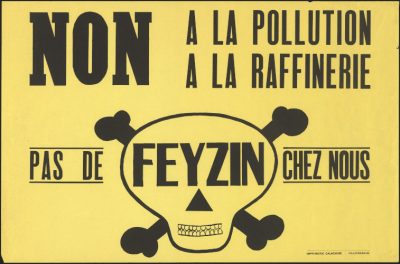
A growing desire to protect mountain, coastal and peri-urban nature and a reflection on the necessary management of pollution and nuisances are leading to the creation, everywhere in the Western world, of ministries in charge of the environment. The French experience, from January 1971 onwards, is the subject of a detailed feedback since 1975, by the first holder of the portfolio [16]. However, the action of the authorities is not unanimous and movements are emerging in a very large number of places, very quickly. The human and financial resources of the administrations in charge of the environment remain limited. While the key moments and places of these mobilizations are well known, such as the first Earth Day in the United States in April 1970, the Larzac rallies in the mid-1970s, or the anti-nuclear protest and its early transnational dimension (Fessenheim 1971, Creys-Malville 1976-1977), it is a kaleidoscope of initiatives that remains to be studied. Some actors are involved in political ecology on a long-term basis, while others are more involved in protecting their local living environment on a case-by-case basis [17].
4. Some pioneering fronts and original approaches
Among the new questions raised by researchers at the beginning of the 19th century, let us highlight three themes that testify, on the one hand, to the interest of environmental approaches to the renewal of society’s history and, on the other hand, to the opening of the investigation to non-human entities (plants, animals). There is no doubt that the debates on global change [18], its denomination and periodization will soon generate new work with a historical dimension.
4.1. Justice/ injustice and environmental inequalities
This approach originated in the United States, where, in the 1980s, African-American communities launched surveys to document the discrimination they faced. Indeed, epidemiological studies have shown the highest proportion of polluting installations near neighbourhoods that are predominantly “coloured”. The theme of environmental justice has gradually emerged in Europe over the past fifteen years or so. It is particularly prized for its social and urban geography [19]. The historical study makes it possible to reconstruct the decision-making process in order to detect whether there has really been a choice to locate the facilities that produce nuisances in poor neighbourhoods, or whether the economic capacity of wealthy populations to leave the sites affected by pollution to move elsewhere has caused social homogenization among the residents of the facility in question. The Flemish historian Tim Soens also used this analytical grid to discuss the unequal protection of the populations of the medieval Netherlands from storms and floods [20]. The consequences of global climate change, on a global scale, such as unequal capacities to protect against storms or heat island effects, will stimulate work in this area.
4.2. gender
The intersection of environmental history and gender history is one of the very new projects being undertaken by a generation of French historians [21]. The figures of the pioneers of nature protection who were the subject of the first studies were mostly male, such as the Americans John Muir in California, and Gifford Pinchot for forestry. The feminine dimension of ecosystem protection, by extending the ancient role of women as “guardians of the household”, can no longer be ignored. We now know that since the beginning of the 20th century, American women’s organizations have been working for the “conservation” of forests and watersheds, in order to obtain federal or more local measures. They helped John Muir in his unsuccessful fight against the dam project in the Hetch Hetchy Valley near San Francisco. In the cities, other civic clubs led by middle-class women set up lobbying actions to improve the environment, such as monitoring factory chimneys identified as too polluting. In France, women were present in animal rights activists. The history of the environment also focuses on more specifically female activities (laundries, match factory workers) that have caused pollution and disease.
4.3. Animals
Animals have been the subject of an ancient attempt at “zoo-history” by the medieval specialist Robert Delort [22], who had encountered in his research the economic and material role they played in the life of societies – through the fur trade, for example. In the Anglo-Saxon world, after much archaeozoological work on the bone remains found during excavations, other approaches such as Harriet Ritvo’s have focused on the significant change in the relationship between human beings and animals, particularly in the industrial age [23].
Cultural developments are certainly underway, as shown by the debates on animal experimentation or slaughter conditions and the heritage use of spaces and species for naturalistic and tourist purposes. The areas and conditions in which animals are treated have been a primary focus of research, particularly around zoos that are born in major capitals during the industrial age.
More recently, the objective of producing “animal biographies” has begun to attract the attention of historians and publishers, as has the history of the protection of birds, or other species (beavers, for example) [24]. Famous historical moments, such as the First World War, have been re-examined in terms of interest in these actors who accompany man [25]. The long history of wolf attacks in France has been the subject of a major historical investigation conducted by Jean-Marc Moriceau, to bring temporal depth to the controversies on the consequences of his return for activities related to pastoralism. Eric Baratay pleads for a story “from the animal point of view”, which involves dialogue between specialists in man-made sources and ethologists, with the questions and approaches of some being able to enrich those of others. Thus, the ancient testimonies of Latin authors or medieval illuminations are reevaluated in the light of knowledge about current species.
5. Messages to remember
- The environment is a contemporary political and social concern that has developed since the 1970s, often using a projection into the future to ward off certain threats or restore certain ecosystems that are victims of human lifestyles.
- But the environment is also, more broadly, everything that surrounds man, what is shaped by societies and what interacts with them.
- Since the “Neolithic Revolution” that produced the invention of agriculture and then of the urban fact, the relations between societies and the environment have a rich history, which is increasingly known because of the attraction of new generations of historians to this field of research. They meet other disciplines: just as air has no borders, so the environment is a subject for interdisciplinary encounters.
- The political, cultural and social dimensions of the desire to protect the environment since the 19th century in the Western world are well known and have revealed that industrialisation and urbanisation have never been accepted with open arms, contemporaries being aware of the procession of nuisances accompanying these phenomena.
- The investigation of past interactions between people and their environment can be useful in measuring the complexity of change and in keeping a critical distance from promises or prospects in the field.
Notes and references
Cover image. [Source: Michel Lefrancq[CC BY-SA 3.0 (https://creativecommons.org/licenses/by-sa/3.0)]
[1] For a first French-speaking synthesis, see Delort R. and Walter F. (2001), Histoire de l’environnement européen, Paris, PUF.
[2] Winiwarter, V. (ed.) (2004) “Environmental History in Europe from 1994 to 2004”, Enthusiasm and Consolidation, Environment and History, 10, p. 501-530.
[3] Morera R. (2011), L’assèchement des marais en France, Rennes, PUR.
[4] Mathis C.-F. and Pepy E.-A. (2017). The vegetable city, Ceyzérieu, Champ Vallon; Frioux S. (2013), The Battles of Hygiene. Cities and environment of Pasteur aux Trente Glorieuses, Paris, PUF.
[5] For a synthesis on industrial pollution, Jarrige F. and Le Roux T. (2017), La contamination du monde, Paris, Seuil. On waste, particularly in Paris, Barles S. (2005), The invention of urban waste. France: 1790-1970, Seyssel, Champ Vallon.
[6] Rome A. (1996), The Bulldozer in the Countryside. Suburban Sprawl and the Rise of American Environmentalism. New York: Cambridge University Press.
[7] Favier R. (dir). (2002), Les pouvoirs publics face aux risques naturels dans l’histoire, Grenoble, Publications de la MSH-Alpes.
[8] For an American French-speaking example: Dagenais M. (2011), Montréal et l’eau. Une histoire environnementale, Montréal, Editions du Boréal.
[9] Parrinello G. (2015), Fault Lines. Earthquakes and Urbanism in Modern Italy, New York, Berghahn.
[10] Worster D. (1979), Dust Bowl: The Southern Plains in the 1930s, New York, Oxford University Press.
[11] Fournier P. and Massard-Guibaud G. (dir.) (2016), Aménagement et environnement : perspectives historiques, Rennes, PUR.
[12] Environmental historians have studied the Rhine several times. In France, geographers have worked on the Rhône and Garonne rivers. See on the Rhône, PRITCHARD S. (2011), Confluence. The Nature of Technology and the Remaking of the Rhône, Harvard University Press.
[13] Mathis C.-F. (2010), In Nature We Trust. English landscapes in the industrial era, Paris, PUPS.
[14] Luglia R. (2015), Scientists to protect nature. La société d’acclimatation (1854-1960), Rennes, PUR.
[15] Becot R. (2018), “La CFDT face à la mutation du système énergétique français (1973-1977)”, Le Mouvement social, 262, 2018/1, p. 17-35.
[16] Poujade R. (1975), Le Ministère de l’impossible, Paris, Calman-Lévy.
[17] Vrignon A. (2017), La naissance de l’écologie politique en France. A nebula in the heart of the 68’s, Rennes, Presses universitaires de Rennes.
[18] Quenet G. (2017), “L’anthropocène et le temps des historiens”, Annales. History, Social Sciences, 2017/2, p. 267-299.
[19] See the journal Space Justice/Spatial Justice. https://www.jssj.org/ ; Julie Gobert, “Iégalités environnementales”, http://www.encyclopedie-environnement.org/societe/inegalites-environnementales/
[20] Soens T. (2003), “Flood Security in the Medieval and Early Modern North Sea Area: A Question of Entitlement?”, Environment & History, 19, pp. 209-232.
[21] “Nature of gender, gender of nature: environmental struggles in Europe, from the end of the 18th century to the present day”, Genre & Histoire, n°22, 2018. See in particular the introduction by Charles-François Mathis, “Pour un croisement des histoires environnementale et du genre”.
[22] Delort R. (1984), Les animaux ont une histoire, Paris, Le Seuil,[reprinted in pocket, 1993].
[23] Ritvo H. (1989), The Animal Estate. The English and Other Creatures in Victorian England, Harvard University Press.
[24] Baratay E. (2012), The Animal Viewpoint. Another version of the story, Paris, Ed. du Seuil.
[25] Baratay E. (2013), Trench Beasts. Des vécus oubliés, Paris, CNRS éditions.
The Encyclopedia of the Environment by the Association des Encyclopédies de l'Environnement et de l'Énergie (www.a3e.fr), contractually linked to the University of Grenoble Alpes and Grenoble INP, and sponsored by the French Academy of Sciences.
To cite this article: FRIOUX Stephane (January 5, 2025), The environment, an object of history, Encyclopedia of the Environment, Accessed January 9, 2026 [online ISSN 2555-0950] url : https://www.encyclopedie-environnement.org/en/society/the-environment-an-object-of-history-2/.
The articles in the Encyclopedia of the Environment are made available under the terms of the Creative Commons BY-NC-SA license, which authorizes reproduction subject to: citing the source, not making commercial use of them, sharing identical initial conditions, reproducing at each reuse or distribution the mention of this Creative Commons BY-NC-SA license.




